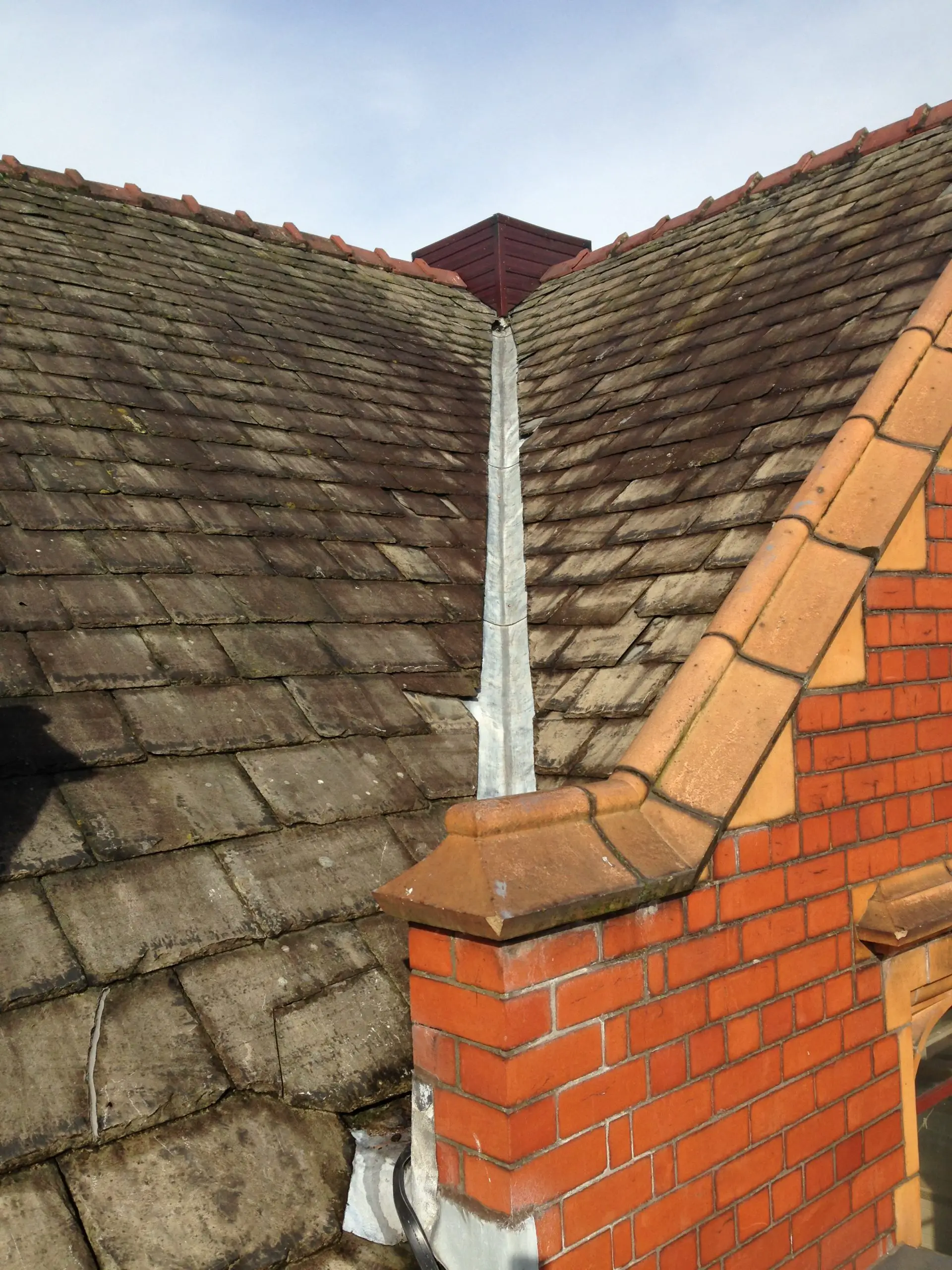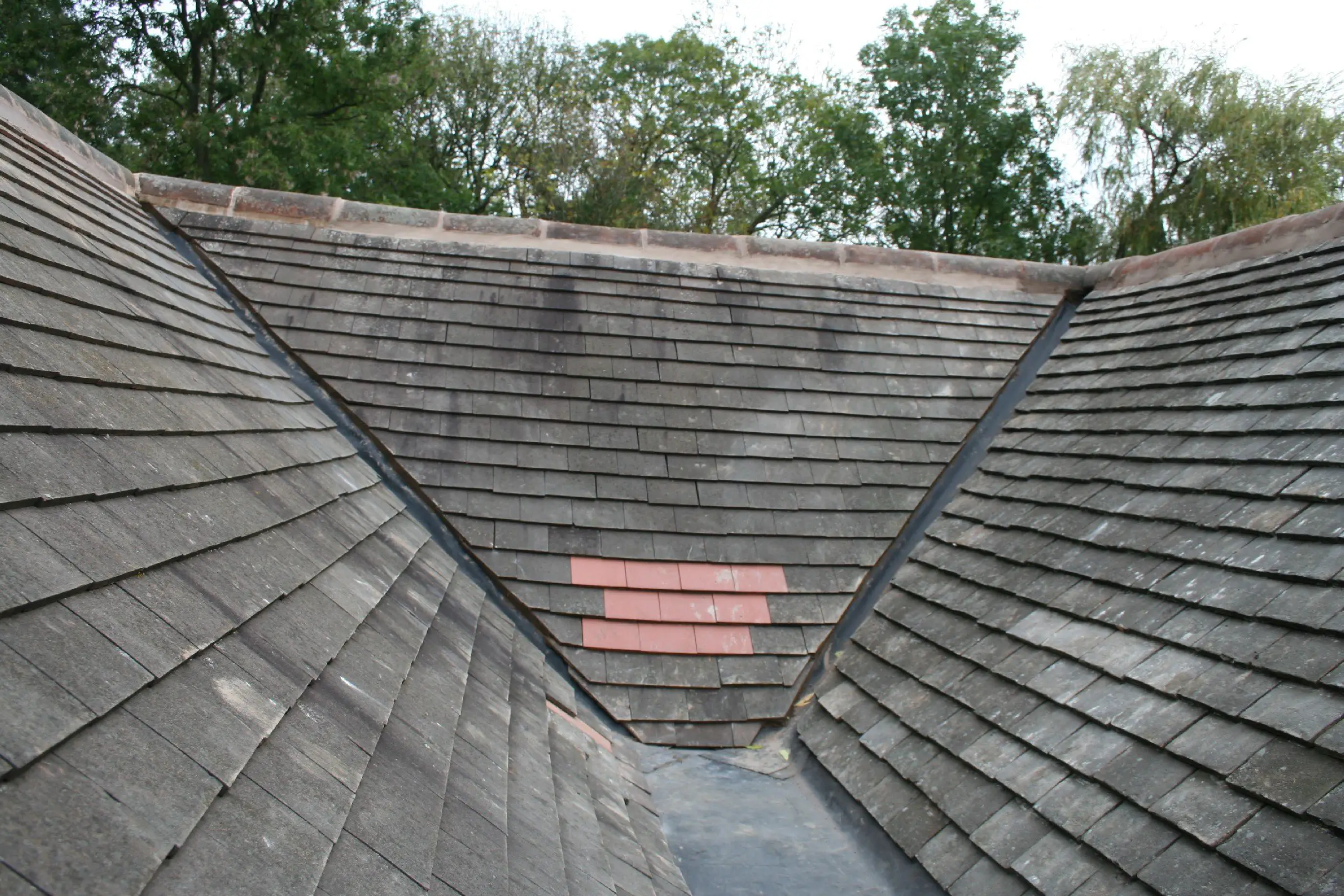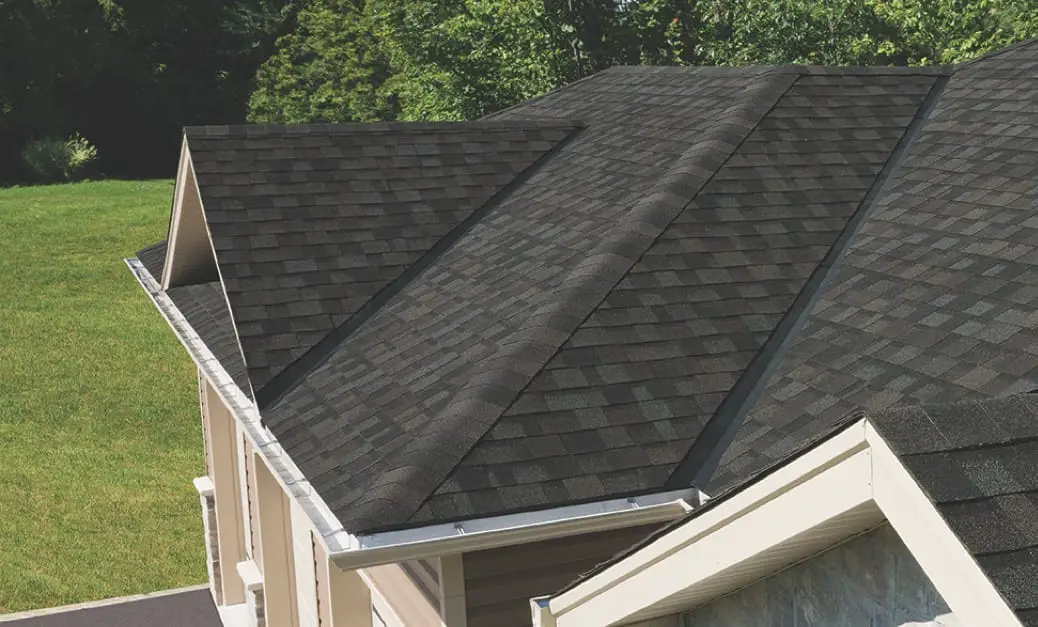Directions For How To Shingle A Valley
Builder Mike Guertin Shows Three Conventional Ways And One Newer Method For Weatherproofing This Crucial Roof Detail
Synopsis: This article illustrates four different methods of shingling a valley, comparing the advantages and disadvantages of woven, open metal, closed cut, and Long Island valleys and describing the authors techniques for preparing and installing each one.
A lot of todays new home designs include multiple gables and roof configurations. When two roof planes meet at an inside corner, a valley is created. Because valleys collect and channel a greater volume of water than a single roof plane, I always make an extra effort to design and build them as watertight as possible.
For this article, I mocked up a section of roof to show four ways to shingle valleys. The mock-up allows me to show all four methods in a similar context. I used three-tab shingles for two of the methods and laminated shingles for the other two. When shingling a roof with three tab shingles, its easiest to shingle the roof planes first, working toward the valley. Laminated shingles let you start in the valley and work outward, which can be an advantage in some situations.
How To Shingle A Roof Valley
Weve been working our way through a series on how to use asphalt roofing shingles on your new home or to renovate an existing one. Weve covered all of the basics, and now its time to get to the specifics.
To start with, well address one of the more common questions we get: how to shingle roof valleys.
Roofing a valley is always an interesting task to face. When it comes to asphalt shingles, its even more interesting roofing a valley withAsphalt shingles is not the same as with other materials.
On the one hand this means learning new techniques. On the other, its actually one of the strengths of using roof shingles for your home. One of the nicest things about the valleys on a home with roof shingles is that they look seamless. The shingles flowing right through the valleys and blend perfectly with the rest of the house.
So whereas other materials give you a definite line break in the material at the valleys, with shingles, your roof achieves a much cleaner and more elegant look.
But, of course, looks arent the only consideration. That sleek, seamless appearance wont mean anything if they arent waterproof. Roof valleys are a critical step in waterproofing a quality roof, and care needs to be taken.
There are many techniques to lay beautiful looking, waterproof roof shingle valleys. Rather than go through all of them, were going to show you one of the quickest, simplest and effective ways to do it.
You May Like: How To Estimate The Cost Of A New Roof
Thunderstruck Restorations Is Your Local Roofing Contractor
Thunderstruck Restorations provides roof replacement and roof repair services throughout Anoka County, Chisago County, Hennepin County, Washington County, Dakota County, Ramsey County, and Wright County. We specialize in the installation of roofing systems from CertainTeed, Owens Corning, Atlas, and GAF.
What Is The Best Sealant For Roofs

- BEST OVERALL: Liquid Rubber Waterproof Sealant Indoor & Outdoor.
- BEST BANG FOR THE BUCK: Gorilla Waterproof Patch & Seal Tape.
- BEST FOR LEAKS: Liquid Rubber Seam Tape Peel and Stick.
- BEST FOR RV ROOFS: Liquid Rubber RV Roof Coating Solar Reflective.
- BEST FOR FLAT ROOFS: Rubberseal Liquid Rubber Waterproofing Coating.
Don’t Miss: How Much To Put New Shingles On Roof
How A Roof Valley Works
Roof valleys are recognizable because they form a V on your roof. It is also the place where water will flow together and then stream off your roof when moisture hits. This is why it is extremely important to have a functional roof valley.
There are different types of roof valleys, including open or metal valleys, closed valleys, and woven valleys. These refer to how the valleys are laid with relation to the shingles, tiles, metal, or other roofing materials. To be honest, as long as your valley is installed correctly, the different types all form the same function. Aesthetics play a role in which type of valley you choose, as well as preference by your local roofers.
How a roof valley works is quite simple. All roofs have meeting points unless you have a flat roofing system. This is for the different styles of roofs. It is at these meeting points where water accumulates. When it rains or snow melts, the water accumulates and flows towards these roof valleys, which then flow into your roofs gutters. This water is then directed away from your homes foundations and landscaping. Metal flashing helps the water to flow easier and smoother, but some roofs wont have flashing at their valleys.
The Three Methods To Shingle A Roof Valley
1. Woven Valley Shingle Installation
To achieve a woven valley installation, a roofing professional lays shingles in the valley and weaves them together. Some homeowners prefer the consistent look that a woven valley provides. But, if the shingles are not laid in the valley properly, a woven valley may not lay flat, creating bumps and detracting from the overall look of the roof.
The woven valley shingle installation method does not call for roofing cement, relying instead on the weave pattern to protect from water infiltration. So, if you are installing a woven valley, you must push the shingles snugly into the valley, while not nailing within six inches of the valley center. If this is not done properly, hollow space may develop under the shingles.
This bridging is a serious problem for the durability of a roof. The empty space makes the shingles vulnerable to penetration, either by footsteps, hail or other debris. For this reason, installing some manufacturers shingles in a woven valley may void their limited warranty.
2. Closed-Cut Shingle Valley Installation
Closed-cut valleys, also called closed valleys, are installed quickly and have a cleaner, sharper look than woven valleys. From the ground, it looks as though the shingles meet in a clean line in the center of the valley. One layer of shingles actually crosses the valley beneath the other.
A Variation of Closed-Cut Valley: the California Valley
3. Open Valley Shingle Installation
- Copper .
- Aluminum.
Don’t Miss: How Much Does It Cost To Replace A Slate Roof
How To Shingle A Valley
The valley on a roof is where two wings of a building join or dormers extend from the roof. The steps for how to shingle a valley focus on creating a fully water-resistant covering that directs water downward. Flashing beneath the roofing felt forms an extra layer of protection over the valley seam.
Do Roof Valleys Need Flashing
Closed valleys arent required to have metal flashing, but they should have additional underlayment lining the valley, preferably a couple layers of roll roofing. You can usually see whether this has been done by looking carefully at the bottom edge of the valley.
Also Check: How Much Does Spanish Tile Roof Cost
What Is A Dead Valley On A Roof
Dead valleys occur when two slopes come together in a way that does not allow proper/natural drainage or very slow drainage. In a dead valley there is essentially nowhere for the water or leaves to go. Water naturally runs downhill. It usually runs down the slope of your roof, into the gutters, and away from the home.
How Much Does It Cost To Repair A Roof Valley
Repairs arent always viable, and almost impossible on heavy concrete tiles , but to carry out a minor repair, see our cost guide in the table below.
A minor repair is any one of the following:
- Replacing a small number of broken tiles.
- Refixing slipped tiles or slates.
- Repairing a lead split by cutting in a sleeve.
- Repairing a fibreglass hole or crack with an extra few layers of fibreglass.
This price guide assumes that an is erected up to gutter height for edge protection.
| Location: |
|---|
Don’t Miss: How Can You Tell If Your Roof Is Leaking
Valley Underlayment Requirements For Asphalt Shingle Roofs
Start by cleaning any loose nails or other debris and nailing down any sheathing nails that are sticking up. If eaves flashing is used, it should cross the valley centerline each way and be installed before the valley underlayment (see Eaves Flashing, discussed
in ROOFING UNDERLAYMENT BEST PRACTICES).
Next install a 36-inch-wide strip of self-adhering bituminousmembrane in 10- to 15-foot lengths up the valley.
Keep the membrane tight to the sheathing at the valleycenter, since any hollow sections could be easily punctured.Next install the 15-pound felt underlayment acrossthe roof, lapping over the valley flashing by at least6 inches.
NRCA recommends that the underlayment should always be centered in the valley, not what you might think that where a steep slope intersects with a more gently-sloped roof section – keep the underlayment centered rather than extending the underlayment further into the lower-sloped roof area.- Ed.
Roll roofing is also an acceptable underlaymentfor asphalt shingle valleys, although it is more proneto crack and is not self-healing around nails.
After the underlayment is complete, the valley can be completed in any of the following ways .
Durability of Roll Roofing Used as Roof Valley Flashing
Our roof valley photo shows roll roofing used as the exposed valley flashing for an open roof valley – an accepted practice.
Continuing from from Best Practices Guide to Residential Construction:
Is Underlayment Necessary For Metal Roof

Structural metal roof panel systems are designed to span structural supports without requiring a structural deck. For architectural metal roof panel systems, a roof underlayment is required to help control water leakage through the roofing system during heavy rain storms or under snow melting conditions.
Don’t Miss: What’s A Hip Roof
Choose 4ever Metal Roofing Today
4Ever Metal Roofing offers the best metal roofs in Fort Wayne. Our expert local roofers love to bring you the beautiful aesthetics, the value, the durability, and the longevity of a metal roofing solution for your home. Our metal roofs are available in a wide variety of colors so you can have the look youve always dreamed of for your home. If you need a roof replacement or installation,
Shingle Technique Saves Time Material And Effort
There are lots of techniques for shingling a valleywoven, cut, open metal linedbut there’s one you just won’t find described on shingle wrappers that’s easier and faster to install, is just as weather resistant, and looks great. It works with laminated or random-pattern shingles that comprise about 65 percent of the shingles installed. The system goes together like a cut valley, but since there’s very little cutting required I call it a “no-cut valley.” You may never cut a valley again.
A no-cut valley starts out just like an ordinary cut valley. Prepare the valley by lining it with waterproof shingle underlayment like Grace Ice and Water Shield for secondary water protection. Determine which roof plane drains the highest volume of water into the valley and which one drains the least. Shingle the lower-volume roof plane first in a standard fashion.
You May Like: Does My Home Warranty Cover Roof Leaks
Reason 5 Plain Tiled Valley
Plain tiles are small tiles and many roofs constructed with these tiles will have a valley that looks like this:
These valleys fail and leak for two reasons:
- A broken tile in the centre of the valley.
- The general age of the roof, wear and tear, failed or rotten timbers etc.
Repairs are often straight-forward, replace a broken tile for a new one while a full replacement takes longer, requires more materials and costs much more.
What Is A Closed Valley Roof
Before the installation of a shingle roof assembly, the roofing contractor installs an underlayment over the entire roof deck. Incorporated into the underlayment may be a self-adhering ice and water shield or another type of underlayment that is a heavier gauge than the underlayment that covers the remainder of the roof system. This self-adhering underlayment acts as the valley lining.
For a closed valley, the roofer will install the shingles onto the roof deck and extend the asphalt shingles through the area where opposing roof planes meet, so that the shingles cover, or close, the valley area. When finished, the valley will be covered with shingles so that the self-adhering underlayment is completely covered with the asphalt shingles. The asphalt shingles serve both as the valley lining and as the wear surface to protect against water.
Read Also: How Far Apart Are Roof Trusses
How Do You Waterproof A Valley Roof
An ice and water shield is a membrane that adheres to your roof in the valleys. Typically about three feet wide, it provides excellent protection when ice or water gets under the shingles. Once the water is under the shingle it will run down on top of the ice and water shield and exit at the eve of the roof.
Kinds Of Closed Roof Valleys
Closed roof valleys involve different types to suit every homeowners needs. You must remember that your roof forms a slope towards its valleys, so the water it receives from rain or snow weather conditions happens in the valley. Over time, the moving water can damage your roof shingles quicker than your field shingles, which complete a massive portion of your roof. You can choose from the following kinds of closed roof valleys for your property:
Recommended Reading: Where To Buy Metal Roof Shingles
Reason 4 Fibreglass Failure
Fibreglass is a popular material to use in a roof valley, its lightweight, cheap, resists UV rays and is watertight.
Unfortunately, older fibreglass products werent as sturdy as their modern counterparts. Some that were installed 30 years ago are cracking, splitting or leaking through small holes.
Does your roof valley look like this?
While it can be repaired, the feasibility will depend on why the fibreglass has cracked.
One-off damage, perhaps from a fallen tree branch etc., can often be repaired while damage due to age, wear and tear etc., may require a full valley replacement.
Shingling The Roof Valley

Its important to begin shingling your roof on the side that will shed the least amount of water. If youre not sure what that is, its the side with the smallest roofing area.
To keep the valley watertight, we need to avoid any joins or nails in the valley. This is critical to maintaining the integrity of the valley, as well as to maintain that sleek aesthetic look that youre after.
You do this in two ways.
As you nail in each valley shingle, you need to take care to push both the top and bottom of the shingle down. This will help you to prevent any bridging.
Continue laying down your asphalt shingles on that side of the roof until you reach the top of the valley.
We touched on earlier that there are many ways to shingle a valley. Which method is used largely comes down to the roofers preference and experience. If theres a way theyre comfortable doing it, that they know delivers quality results, then thats the right way.
To create a waterproof valley, some roofers will completely overlap the shingles from both sides. Then theyd hand cut off the excess material to create the smooth join.
This method takes a bit longer, but still creates a nice, clean line at the end.
You May Like: How Much Does It Cost To Have A Roof Done
What Are The Disadvantages Of A Metal Roof
Disadvantages of Metal Roofing Initial Installed Cost: While they are not nearly as costly as wood shakes, high-end tile, or slate, metal roofs do have a higher up-front cost compared to most asphalt shingles. Lengthier install period: Some metal roofing systems are complex to install.
How To Choose A Roof Valley Style
If you cannot decide which style would suit your roof better, itshelpful to understand the differences between the main valley types to gain abetter understanding of their functionality. One of the first aspects toconsider is aesthetics.If you spend some time traveling around your neighborhood looking at thedifferent styles, you can decide which you think would look best on your home.Some people prefer the high-end look of an open valley, which is often used on tile,clay or wood shake. Because of the thickness of these materials open valleys ornormal are normally installed.
In terms of functionality, both valley styles are qualityoptions to choose from. Closed valleys protect the roof lining from abrasionthat water run-off would cause, and are therefore quite durable options. Themain advantage of closed valleys is that they protect therooffrom snow and ice build-up, however in Florida this is not an issue that needsto be considered. Open valleys are excellent for preventing moisture fromentering through the lining and protecting your roof from the humidity of theoutside air. At the end of the day if you have a quality roof installation youwill never have to worry about leakages or problems.
Recommended Reading: How To Remove Wasp Nest Under Roof